Undoubtedly, there are a lot of choices that you need to make before launching a final product. From budget revision, feature design to mockup creation, everything plays an important role. But the fact of the matter is that choosing the right development technique is one of the most important as well as impactful decisions. You can’t just directly jump into the development process if your product is in its discovery stage.
In this article, we will take a deep dive into POC (Proof of Concept), MVP (Minimum Viable Product), and prototype. Hopefully, this will allow you to make the best decision for your app development, so let’s get started.
What is Proof of Concept, Prototype, and MVP?
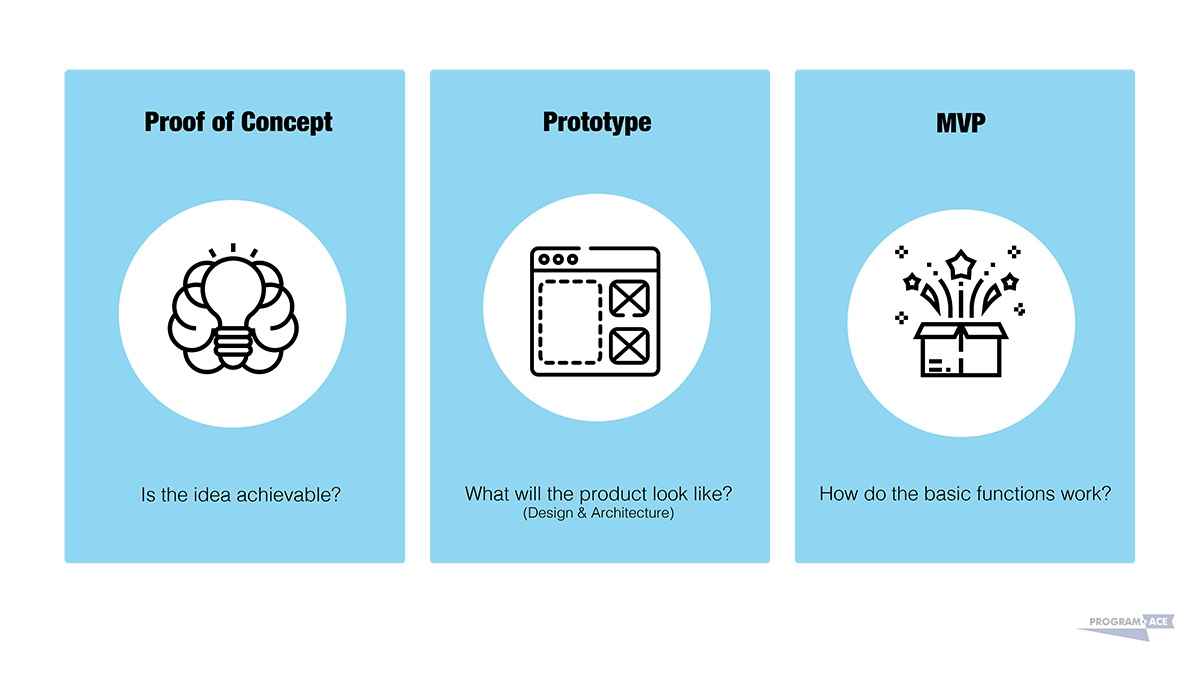
POC (Proof of Concept)
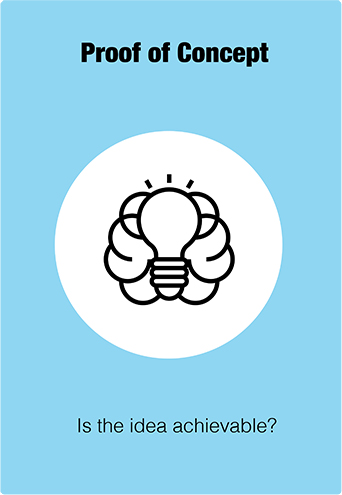
In business, POC stands for Proof of Concept, an approach that is used to validate your idea. It’s important to keep in mind that this stage comes into play way before the actual development process starts
What Is It for?
In order to make sure whether your idea can be implemented on business model grounds and technical capability, a small project is implemented. Additionally, POC for a mobile app is not typically available for customers or the general public. That’s because the idea behind POC is to check whether the concept is actually feasible or not.
Proof of Concept Features
- In order to confirm the potential of your idea, POC showcases its feasibility.
- The whole process of POC development is both a time and cost-effective method.
- POC highlights the errors and risks at an early stage.
- Provides “DOs” and “Don’ts” before the actual development process.
How to Create POC?
In order to make sure that your idea is feasible, you can create POC by following the five simple steps mentioned below.
- Step 1: Determining the target market and how your idea can help them
- Step 2: Modifying the idea (if required) by performing market research and brainstorming with coworkers and team members
- Step 3: Creating the prototype on the basis of selected solutions, features, and requirements and testing the prototype
- Step 4: Collect the feedback received from the testing of the prototype and document it
- Step 5: Approve the POC based on the feedback (at this point, some amendments might be required, which takes you back to "Step 2".
Prototype
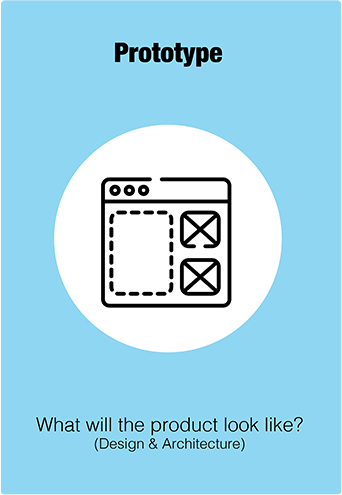
The prototype comes after the POC stage, and the main purpose of it is to demonstrate how your application will work from one page to another. It's basically the first working model of your project that allows you to understand the experience that it will offer to the end-users.
What Is It for?
The prototype is undoubtedly one of the most important stages of app development. You’ll most probably find some bugs and glitches in the prototype testing process. The reworking and testing process will continue until the acceptable model of your application is achieved.
A prototype helps you create the foundation on which your final software and system will stand. Keep in mind that it’s an iterative method where you find errors and eliminate them. Not only does the prototype allow you to understand the flow of your application, but it also helps you make sure that your application offers all the important and required features.
Prototype Features
- Provides early feedback regarding your application
- Allows you to identify errors in development phases and app design
- Helps you simplify complicated ideas into an easy format
- You can use your prototype to get seed funding as well
How to Create the Prototype?
You can use the following steps to create a functional prototype most efficiently and effectively.
- Step 1: Create your app design on paper
- Step 2: Discuss the design with your team to make sure it adheres to your focused idea
- Step 3: Edit the design if required to improve it
- Step 4: Convert your design from paper to computer
- Step 5: Test the digital design rigorously to find errors and glitches and remove all of them
MVP
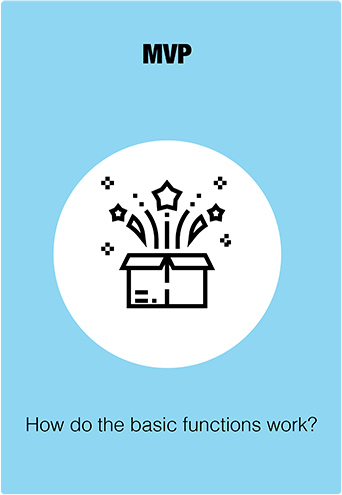
In technology, MVP stands for "Minimum Viable Product", and it's the first iteration of your fully functional application. It includes all the core features of your idea in working condition. It's a standalone mobile application that you present to people to evaluate the end user's experience.
What Is It for?
A Minimum Viable Product allows you to verify the profitability of your application because it demonstrates market demand. Moreover, on the basis of the feedback that you get from the end-user, you can also improve your application by adding more features and fixing the errors in the existing ones.
MVP Features
- Allows you to achieve greater development readiness
- Helps you improve your application with the help of continuous end-user feedback
- Enables you to attract high retention via small investments
- Allows you to save both time and money
How to Create a MVP?
Consider using the steps mentioned below to create your MVP.
- Step 1: Decide the core features of your application that you want to include in the MVP
- Step 2: Discuss the features with your team and make the required changes
- Step 3: Choose the right development platform that offers ease of use
- Step 4: Build your minimum viable product and test it
- Step 5: Launch it for end-users to get their feedback
- Step 6: Rectify errors and modify the application
Is There an Overlap Between POC, Prototype, and MVP?
Many people think that POC, Prototype, and MVP are entirely different approaches to developing mobile apps. It’s one of the biggest misconceptions. The fact of the matter is that the proof of concept, prototype, and a minimum viable product are three different stages of the complete development process. The second stage starts where the first stage ends, and the same is the case with the third and second stage.
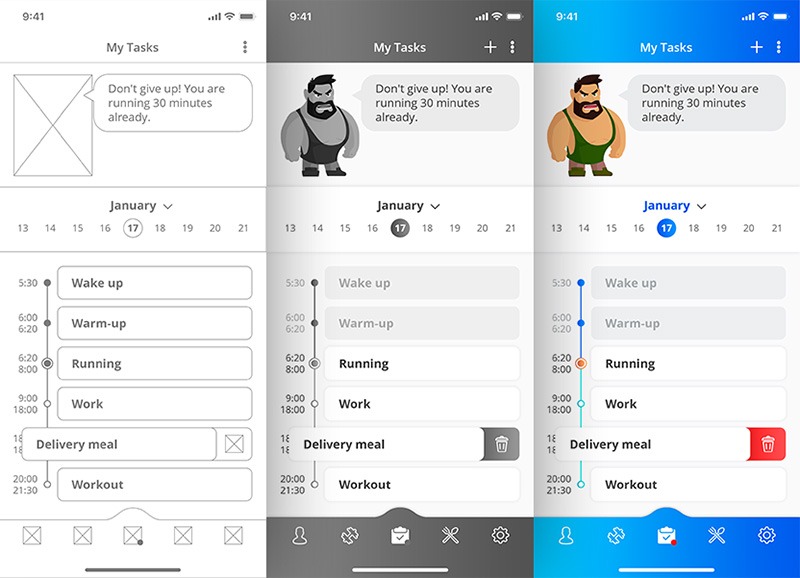
App prototype created by Program-Ace
The first stage - proof of concept - is basically an intangible idea without any physical value. This stage allows you to make sure whether your idea is worth developing or not.
The second stage - prototype - is the first physical form of your application that allows you to find out how the end-users are going to interact with it.
The third and the last stage - minimum viable product - is when you launch the first fully functional model of your mobile application, which the end-users can test.
How does an idea develop into a proof of concept?
The most important factor that develops your idea into a proof of concept is proof of the need. If your idea is capable of filling the gap that exists in the market, then you can develop your POC. But you also need to plan out the main pain point to achieve it.
Moving on to prototype product development
Once you have successfully developed your proof of concept, the next step is the creation of a prototype. It must incorporate the core features as well as UI/UX of your idea into a rudimentary product that can be used to test it in real-time.
How does a prototype grow into an MVP?
An MVP (Minimum Viable Product) is a fully functional solution of your product that you can share with the general public to use. It’ll allow the end-users to test all the core features of your application, providing the primarily intended solution. An MVP allows you to test your application beyond your team members and selected individuals.
Comparing POC vs MVP vs Prototype Side-by-Bide
As mentioned, proof of concept doesn’t have any physical embodiment, as it’s just an idea for the mobile application that you want to develop. It shows the potential of your idea that allows you to determine whether it’s workable or not.
On the other hand, the prototype is the physical model of your application that shows the flow of your application from one screen to another.
Lastly, MVP is the first fully functional application that offers the core feature of your application which end users can use.
| How long does it take to develop? | Creating a proof of concept isn’t a long process, and expanding upon the idea, it can take from one to six weeks. On the other hand, determining the time of prototype and MVP solely depends upon your concept. |
| How much does it cost? | As far as the cost of these stages is concerned, the proof of work generally costs nothing except time. Additionally, determining the cost of the prototype is a bit tricky as it can be free, and it can also cost you a lot, depending upon your idea. |
| How is it tested? | The proof of concept is finalized after a discussion with your team members and coworkers when you successfully decide whether you should move forward with development or not. Moreover, the prototype is tested after its creation by your team and selected individuals (who want to be a part of it voluntarily) that you choose after interviewing them. Lastly, the MVP is tested directly by the end-users once it's developed and tested internally. |
| When should you show it to investors? | You can involve the investors once the prototype is created and also tested successfully. It will help them understand the potential of your application to provide the solution for a certain problem. |
Settling on a Business Approach
You can utilize any of the 3 approaches depending upon your current project state. If it's just an idea, then it's best to go through all the stages. But if you're going to digitize an already existing product, you can skip the first stage to save time and money.
Can I skip the POC, prototype, or MVP stage?
All three of these stages are important and helpful, but it certainly doesn't mean that you must always follow them sequentially. It might be unnecessary to spend time on these steps, especially on the POC in some scenarios, such as the digitalization of an existing product.
What do I gain from using a full 3-stage approach?
There are many benefits to using these approaches on different development stages, and some of the most important ones are the following:
- Allow you to test your idea before investing in the development
- You can focus on the core functionality of your app to facilitate speedy development
- You can find loyal users even before launching your product
- Help you get quick feedback
- Better odds of receiving seed funding
What to Do if I Need Help with POC, Prototype, or MVP?
If you need help with POC, prototype, or MVP, then you are welcome to contact our experts. Program-Ace hosts the best development teams in Europe that offer full-cycle software development services.










